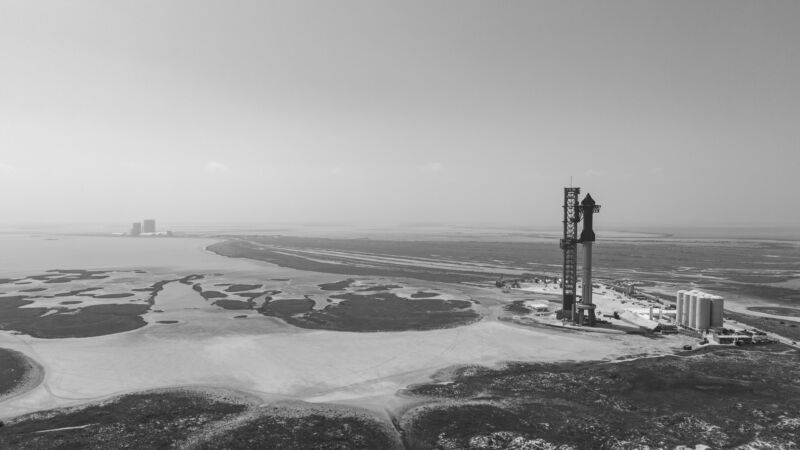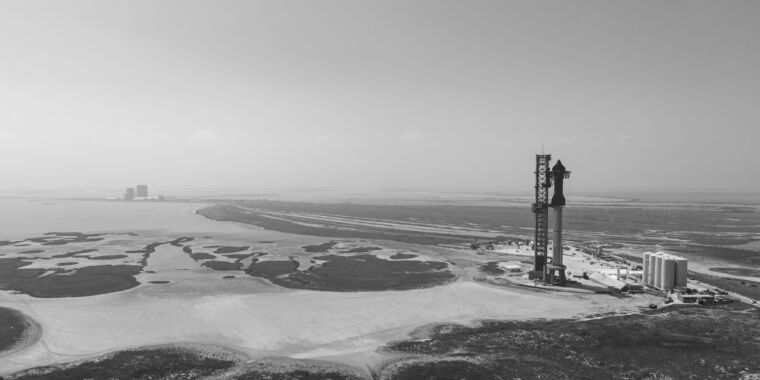
SpaceX
STARBASE, Texas– It’s about to ignite.
Probably.
SpaceX completed final preparations for its Starship and Super Heavy vehicles on Saturday, refitting them with a flight termination system that kicks in if the rocket flies off course.
Then on Sunday, the company completed its final launch readiness assessment and cleared the rocket for launch.
That’s why everything is almost ready for Starship’s historic first test flight. But that doesn’t necessarily mean there will be smoke and fire Monday morning, when the launch window opens at 8 a.m. local time in South Texas (1300 UTC). And we need to set expectations accordingly.
First, there are some weather issues. SpaceX said on Sunday that while conditions at the launch site look good for launch, there are concerns about wind shear higher in the atmosphere. Shear occurs when winds change direction and speed at different levels of the atmosphere, and if the shear is high enough, it can tear apart a rocket’s structure.
Weather aside, this is the first launch attempt for the rocket’s first Super Heavy stage, and the first time the Starship’s upper stage has flown in a stacked configuration. If we count both stages, there are 39 Raptor rocket engines, all of which are carefully checked before takeoff. If one of the thousands of sensors picks up an incorrect value for temperature, pressure or any other variable at the wrong time, the start attempt is cancelled.
SpaceX has performed multiple fuel tests and static fire tests on these vehicles, yet this is a brand new launch system. The odds of making it all the way to T-0 and taking off on Monday during the 90-minute launch window are probably somewhere in the ballpark of 50 percent, or less, assuming good weather.
When the rocket flies, the fun begins. No living human being has ever seen a rocket fly this powerful, or with so many first stage motors. It will be big and loud, with a lot of fire. If all goes well, it will include some upward movement as well.
Opinion is divided on how successful this flight will be for Super Heavy and Starship. SpaceX founder Elon Musk has given the launch a 50 percent chance of success, but I think he’s probably intentionally lowering expectations here. He got better at that. On the eve of his first-ever rocket launch, the Falcon 1 in March 2006, Musk told a reporter that the rocket had a 90 percent chance of reaching orbit.

SpaceX
His first three Falcon 1 launches failed.
But since then, SpaceX has gotten pretty good at launching rockets. During its debut flight in 2010, the Falcon 9 reached orbit. In 2018, the Falcon Heavy did the same. Subsequently, three different versions of Starship prototypes, Starhopper, SN5 and SN8, were all successfully launched. So by my count, the last six “new” rockets that SpaceX debuted have all launched more or less successfully.
It’d be pretty amazing if Super Heavy and the Starship’s top stage followed suit, and you’d really have to tune in to find out. A webcast of the launch attempt begins approximately 45 minutes before launch.
https://www.youtube.com/watch?v=L5QXreqOrTA
Integrated flight test spaceship.

